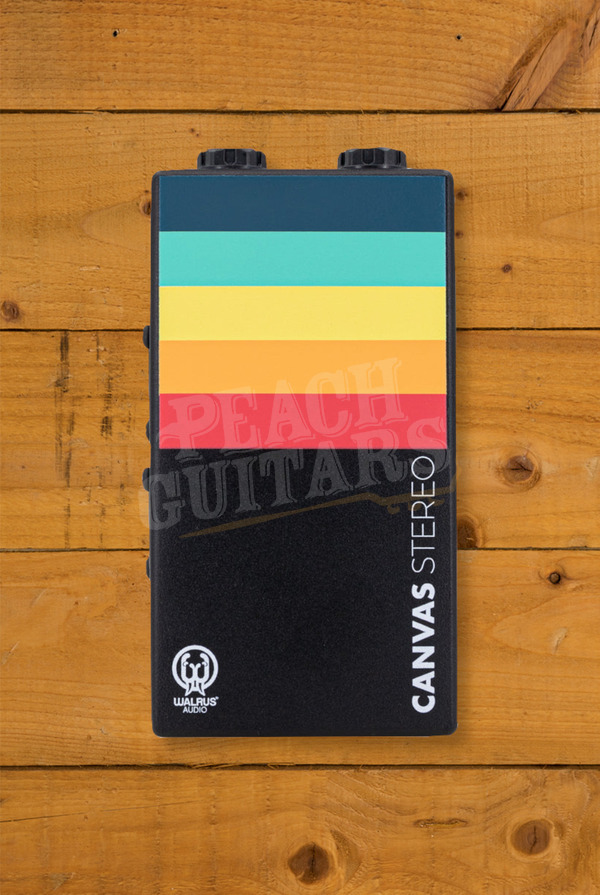At Peach, we strive to keep our estimated pricing current, but prices may occasionally be subject to change. Lead times can also vary and are sometimes difficult to predict. Please feel free to reach out to our sales team anytime for the latest information.
Walrus Audio Canvas Stereo | Dual Line Isolator/D.I.
A Canvas For Your Sonic Art
The Canvas stereo is a Direct Box/Line Isolator designed to remove any resistance between you and your audience by giving a pristine sonic foundation to build your masterpiece upon. From houses of worship to the dive bar downtown, Canvas Stereo is built to be the performance tool that goes wherever you are making your music.

You are the artist. Your sound is the paint, and this is your canvas. The Canvas stereo is a Direct Box/Line Isolator designed to remove any resistance between you and your audience by giving a pristine sonic foundation to build your masterpiece upon. From houses of worship to the dive bar downtown, Canvas Stereo is built to be the performance tool that goes wherever you are making your music.
Canvas Stereo is a Passive Line Isolator (LI) and Direct Injection (DI) device that converts your unbalanced signals into balanced signals for interfacing properly with your recording interface or mixer at front-of-house. If you're using an amp-in-a-box (a DSP Guitar Rig such as Strymon's Iridium pedal or Walrus' ACS1), keyboards, or any other instrument utilising both left and right outputs, then the Canvas Stereo is your new bridge to the front-of-house. The Canvas Series DIs pack everything you need from a DI/LI into a standard pedal-sized enclosure designed to look great right on top of your board.
Needing a mono solution? Peach Guitars also stock the Canvas Mono.
Canvas Stereo Features:
- Flat frequency response from 20Hz-20kHz
- Converts ¼” unbalanced input to XLR balanced output.
- Transformer isolated output.
- Sum switch
- Pad: Enables a -15dB input pad (Only in D.I. mode) for reducing hot signals in order to minimise distortion.
- D.I./L.I.: Choose between Direct Injection or Line Isolator modes (Out for DI, In for LI)
- GND Lift: Isolates the GND pin on XLR to help reduce hum if present. Leave out for normal operation.
- Custom wound transformers for low THD (Total Harmonic Distortion) and full frequency response.
Direct Injection:
Use DI mode when connecting an unbalanced, high impedance source (Electric Guitar, Bass Guitar, etc). The signal will be reduced by -20dB (-35dB with pad engaged) and converted to a balanced signal via the transformer connected to the XLR output. Use the gain on your mixer or preamp to bring up to line level.
Line Isolator:
Use the LI when needing to connect your unbalanced, low impedance source (Amp + Cab Sim like the ACS1, keys, etc.). The signals will remain full volume and be converted to balanced signals via the transformer connected to the XLR output. Less preamp gain will be required in LI mode.
DI or LI?
When deciding between DI or LI, check with the manufacturer of your gear to find the output impedance of the device you are wanting to interface. For a general guide:
High Impedance = anything above 1k = Use DI
Low Impedance = less than 1k = Use LI
Troubleshooting:
This is a passive device, so you will not damage anything if connected improperly, but it could affect the signal level and frequency response if not connected properly. This is an easy thing to test since the LI/DI switch is built into Canvas. If you lose high-frequency information when using LI mode, then you should probably be in DI mode.













